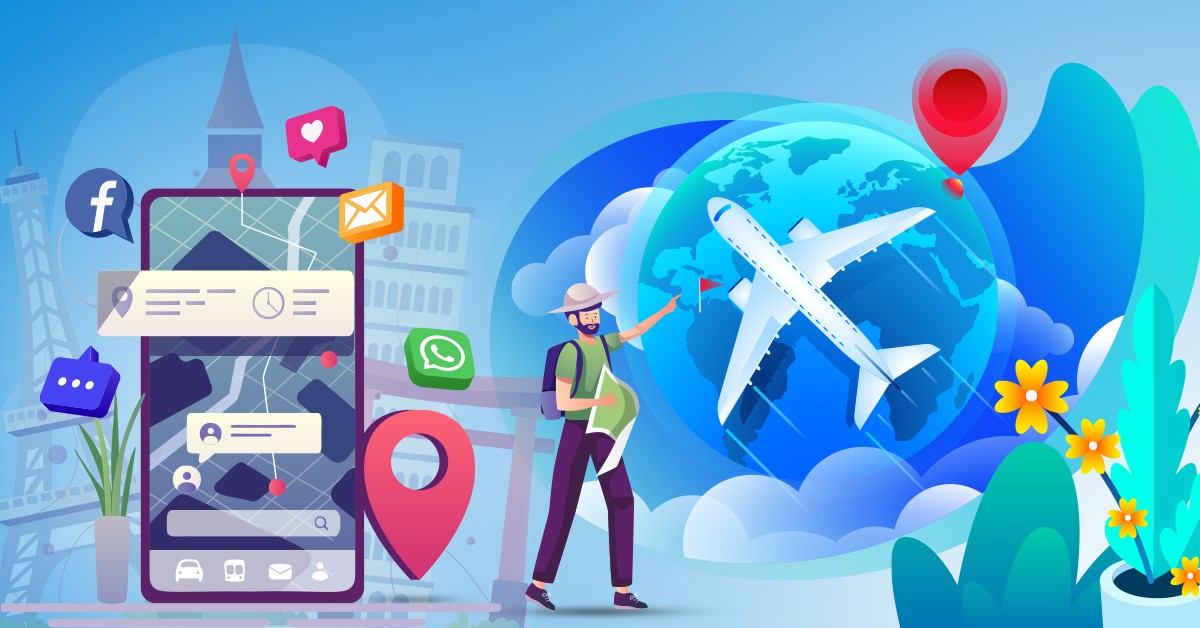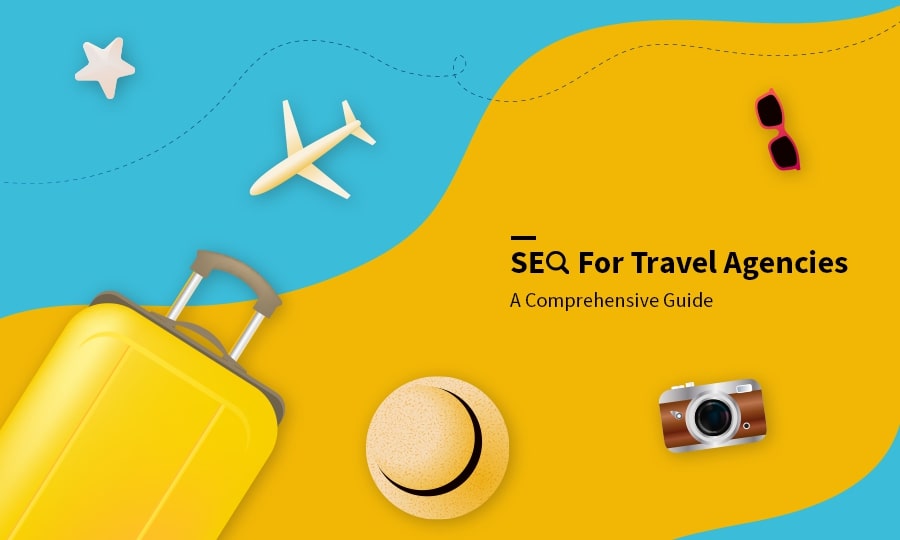
In a time when there is too much information online, it is hard to get people's attention, especially in the exciting and ever-changing world of travel. Not all brands with the most money stand out today. The ones that tell the best stories do. Marketing of travel has come a long way from traditional ads. Now, it depends on making an emotional connection, being real, and having a sense of adventure. Storytelling is at the heart of this change.
This article looks at how storytelling changes marketing of travel from simple ads to stories that inspire, engage, and convert. As we grow, we'll look at how cultural awareness, historical trends, modern platforms, and consumer psychology all play a role in this powerful marketing strategy.
The Power of Telling Stories in the marketing of travel
We love stories. They are fun, teach you something, and most importantly, they make you feel something. This is especially true when it comes to going places. A good story can take a reader on a trip before they even buy a ticket.
When it comes to marketing of travel, stories connect the destination to the traveler's imagination. It gives you more than just facts; it gives you feelings. Instead of saying "Visit Paris," stories invite people to "Sip espresso in a quiet Montmartre café as the Eiffel Tower glimmers in the distance."
This emotional connection is what makes marketing of travel work. Marketers use stories to connect with travellers' hopes and dreams, turning casual visitors into loyal customers.
The History of Storytelling
For a long time, travel and storytelling have been linked. People have always written about their travels to share with others, from Homer's "Odyssey" to Marco Polo's journals and Ibn Battuta's stories. These stories gave us a glimpse into places, customs, and cultures we didn't know about, which made us want to travel and explore.
Before the internet, marketing of travel relied a lot on word of mouth, postcards, and shiny brochures. These were often based on simplified or romanticised versions of real trips. This tradition is still going strong today, but digital tools make it more real, immediate, and widespread.
Marketers can better understand the power of narrative continuity when they know where it comes from. Using the old tradition of telling stories about travel makes modern content more interesting.
Why Traditional Marketing Alone Doesn't Work Anymore
Marketing of travel used to rely on static content like flyers, catalogues, travel agents, and billboards before the internet changed the way people talk to each other. Those methods still work, but they aren't enough anymore. Digital messages are now sent to consumers on many devices and platforms, making it harder than ever to stand out.
What does this mean for the marketing of travel?
It means that brands need to change. Hard selling is no longer in. Soft content, tells a story, and is emotionally smart, is in. Travellers want to get a feel for the place before they go there. They want to see themselves in the story, not just as people who are watching it.
This change is made even bigger by the rise of experiential and influencer marketing. It's not just the product (a place to go or a service); it's the experience you have and share. marketing of travel must be the same way.
Emotional Triggers: The Heart of Travel Stories
When traveling, telling a good story that appeals to emotions is key. These feelings, whether it's the thrill of adventure, the comfort of a luxury stay, or the peace of nature, help people make decisions.
Here are some emotional triggers that many good travel stories use:
Nostalgia: Making you want to go back to a simpler or happier time
Wonder: taking in the beauty and mystery of a new place
Belonging: sharing local traditions, culture, and relationships
Escape: Giving you a break from the usual and stressful
Change: Showing how exploration can lead to personal growth
When marketers use these feelings, marketing of travel becomes not only convincing but also unforgettable.
A Useful Framework for Writing Better Travel Stories
1. Know Who You're Talking To
When it comes to marketing travel, being specific is important. Budget travellers won't be interested in a luxury cruise line, and eco-hostels won't be able to get people who want 5-star amenities. Brands should divide their audience into groups based on their age, lifestyle, values, and goals.
People who travel these days are more niche-focused. Some examples are eco-tourists, digital nomads, slow travellers, heritage seekers, solo women travellers, LGBTQ+ adventurers, and more. Good storytelling takes into account their fears and interests.
2. Use the Hero's Journey as a guide
This classic story structure makes stories easy to understand:
The Ordinary World: Life before the trip
Call to Adventure: What makes you want to travel
Challenges and Discovery: Getting over problems and learning from them
Change: a new way of looking at things or a new sense of purpose
This structure pulls people into stories that they can relate to, which makes it great for marketing of travel.
3. Add sensory details
Use all five of your senses. The audience can mentally and emotionally enter the destination when there is a lot of detail.
Rich sensory images make marketing of travel feel real and real.
4. Put authenticity first
People today don't trust content that is too polished or has too many stock photos. They want real voices and stories. Working with micro-influencers, using UGC (user-generated content), and showing real testimonials that aren't scripted all make things feel more real.
Trust comes from honest portrayals, and trust leads to sales.
5. Add pictures and videos to your content
Images, videos, and reels all tell stories in a way that makes you feel like you're there. Visual media is very important for modern marketing of travel, especially on sites like Instagram, TikTok, and Pinterest.
6. Making Travel Stories Better through SEO and Online Reach
It doesn't matter how pretty a story is if no one reads it. SEO is an important part of digital marketing for travel. Here's how to mix storytelling with being easy to find on search engines:
Keyword Optimisation: Use long-tail keywords that are related to travel in a natural way.
Alt text for images: Make it easy to find pictures.
Meta Descriptions: Make summaries into short previews.
Internal linking: Help readers find related content.
Headline Hooks: Use curiosity and clarity to get people to click.
These strategies make storytelling not only interesting but also easy to find.
Platforms That Make Travel Stories More Interesting
1. Blogs
Great for telling long stories, doing SEO, and going into depth about places or experiences.
2. Social Media
Good for short pieces, photo essays, and stories that happen in real time. Facebook posts, Instagram Stories, and Pinterest boards are all good ways to share information.
3. Video Sites
YouTube and TikTok are great for younger people because they take them on visual journeys.
4. Podcasts
Audio stories give characters depth and can be listened to anywhere.
5. Campaigns by email
Serialised stories sent by email newsletters keep people interested over time.
The tone and expectations of the people who use each platform for marketing of travel should match.
Consistency in Brand Voice and Story
All of your stories and platforms should have a clear brand voice. Stick to it, whether you're playful, poetic, fancy, or down-to-earth. This consistency helps people remember things and feel like they are still the same.
For example, a travel brand that cares about the environment might use a grounded, earthy voice that focuses on connection and respect. On the other hand, a luxury cruise company might focus on luxury and escape.
Being sensitive to other cultures and including everyone in travel stories.
Because travel is global, you need to be aware of other cultures. marketing of travel needs to be careful not to make communities seem strange, stereotype them, or lie about them.
Advice during the Travel Marketing:
-
When telling stories about your area, use local voices.
-
Respect holy places and traditions.
-
Don't use clichés or language from colonial times.
-
Show that travellers of all kinds and backgrounds are welcome.
-
Ethically telling stories builds trust, loyalty, and respect.
How to Measure the Effect of Travel Storytelling
Data is still important. Here's how to tell if storytelling works in marketing of travel:
Engagement Rates: Comments, shares, and saves are more important than likes.
Conversion Metrics: How many readers go on to the next step?
Time on Page: Longer times mean that the content is interesting.
Sentiment Analysis: Keep an eye on what people say and how they feel.
User-Generated Content: More user-generated content (UGC) means a stronger community.
What Will Travel Storytelling Look Like in the Future
AI and Personalisation: AI tools can now help make stories fit each person's tastes.
Original and meaningful Stories: Being sustainable as more people travel with purpose, meaningful stories will also grow.
Decentralised Platforms: Web3 and blockchain could change who owns content.
The future of marketing of travel will use technology, but stories will still be important.
Case Studies: Brands That Are Great at Telling Travel Stories
Airbnb's "Live There" campaign focuses on personal, local experiences.
National Geographic: Combines stunning images with deep stories.
Intrepid Travel: Promotes ethical travel by sharing real stories from customers.
Visit Iceland: Known for funny and strange campaigns like "Let It Out," where people scream into the Icelandic wilderness.
These brands use stories to connect with people, not just to sell.
Conclusion
Storytelling is more than just a creative tool in a crowded digital world; it's also a strategic must. Stories that touch people's hearts and minds are at the heart of marketing of travel that works now and in the future. Not just the place you go, but the story that goes with it sells. It could be a breathtaking trip through the Andes or a peaceful retreat in the Alps.
Be real, connect with people's feelings, and write stories that travellers can relate to. In the changing world of marketing of travel, storytelling doesn't just sell; it also inspires, teaches, and changes people.

 Start your Travel Business with Our 7 Day Free Trial Website!
Start your Travel Business with Our 7 Day Free Trial Website!





